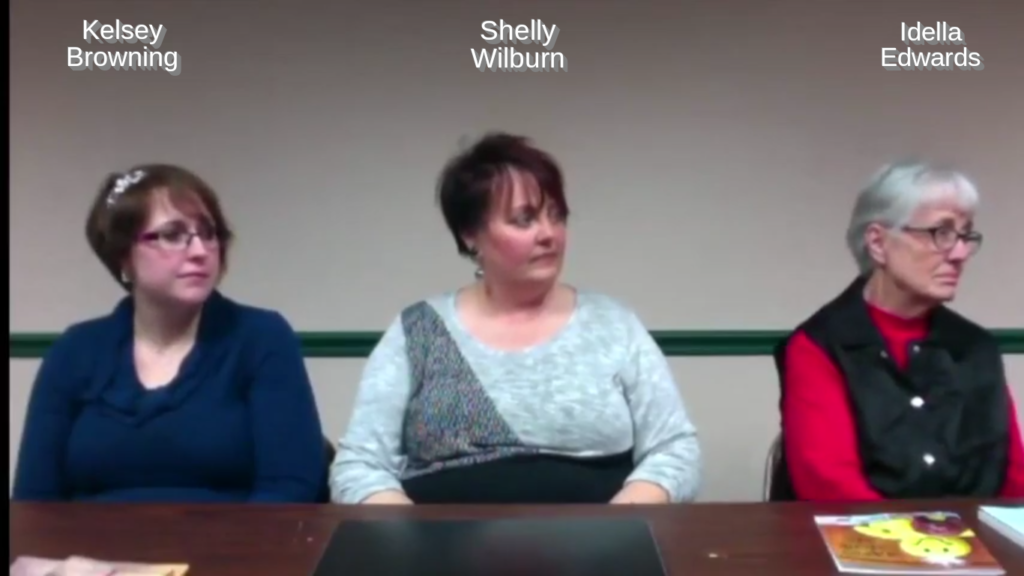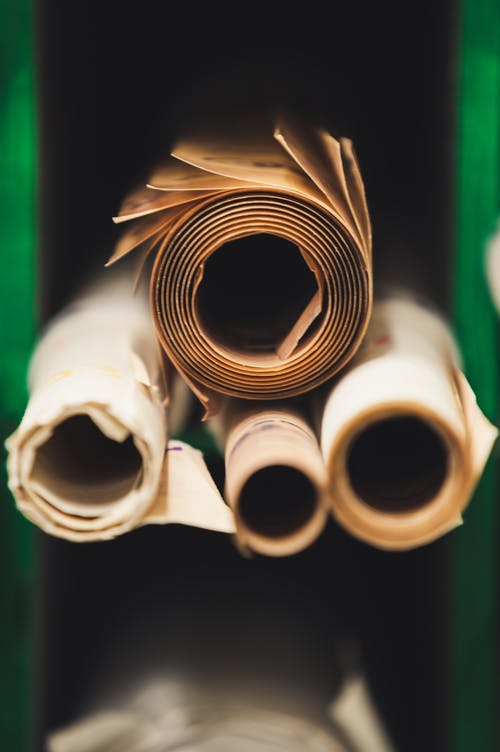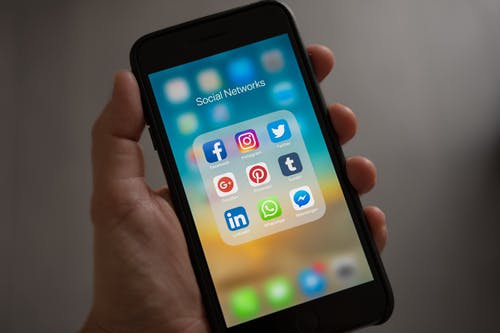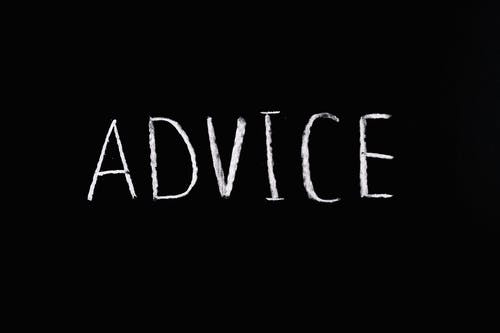“Writers Panel – How Successful Authors Wrote Their Books” is an excerpt from the class on “How to Write a Book in 28 Days or Less.” This panel discussion was one of the most popular sections of the class. Here is the transcription of the video that was lightly edited to change spoken speech into written speech. If you would like to know the stories of these successful authors, read on.
Our Panel
Randy: We are glad to have you with us tonight. Please introduce yourselves.

Kelsey Browning: My name is Kelsey Browning. I live in West Frankfort, Illinois. I have lived there since I was two and Johnston City before that, so Southern Illinois the whole time. I am married to a farmer, Kendall Browning. We live on this little family farm with my three rotten but adorable kids.
Shelley Wilburn: I’m Shelly Wilburn. I’m also from West Frankfort. I’m married to D. A. Wilburn. He is a carpenter, and we have three grown children, and almost four grandchildren.
Idella: Almost?
Shelley: Almost. We have one on the way.
Idella Edwards: My name is Idella Edwards. I was born and raised in Aurora, Illinois, and my husband and I have lived in eight different states.
We retired from Oklahoma, and looked at Oklahoma and said, “Do we want to stay here for retirement, and we said, ‘No.'”
So I got on the Internet and picked Marion, Illinois, for our retirement. We have five children and 12 grandchildren.
Their Books
Randy: Okay, so tell us about some of your books. We’ll go in reverse order,. So, Idella, you can start.
Idella: Well I have four Christian devotionals, and then I have four children’s books. I have a poetry book, and then I have another one I call my grandchildren book, Parenting 101.
I’m really jealous of these two, starting so young, because I didn’t start writing until I was retired. In fact, I started writing because I came to Marion, Illinois to join Aldersgate United Methodist church. After we got there, Susie Rice started teaching a class. I started writing encouragement emails to the group as a whole, and then after a while, I thought I needed to collect those and put them in a book, you know, so that’s kind of how I accidentally got started.

Shelley: I currently have two published books. The titles are Walking Healed. They’re both titled the same thing. One is just the Walking Healed book. It’s a journey of forgiveness grace and hope.
The second book is the Walking Healed companion study, which is the Bible study guide.
I got into writing when I was 12 years old but not full time until about five years ago, when God healed me of over 40 years of depression and mental and emotional abuse, and that’s what my book is about — overcoming. It’s about overcoming your obstacles and things in your life. I’m currently working on my third book, which is another Bible study, and it’s titled, Warrior Princess. It is about discovering your identity in Christ.
Randy: And I would say that Shelley was in the first version of this class.
Shelley: I was.
Kelsey: My book is called, Here I Am. It’s part of a series. It’s young adult fiction.
It starts out as the story about two teenagers, and friends. Then it spreads from there to things that are going on in their lives.
I’ve had a lot of readers that are a lot older than teenagers where I originally geared it. I actually have found that, to my knowledge, one teenager has read my book. Therefore, I hesitate to call it teen fiction.
For me, writing a book was an accidental beginning as well. My friend growing up, always, always wrote short stories. Any opportunity she had, she was writing. I was looking for hobbies, and then I just sat down, and God kind of just gave it to me. I never, never, planned on being a writer, but that, that’s how I got started, so it was just kind of an accidental thing.
Questions and Answers
Randy: OK, Now we will open it up to you class members to ask questions.

Lynn Masters: Did all of you do this in 28 days, or was this kind of like you had the basics but kind of extended past that?
Shelley: Once I got started, it went really fast. Now, when I wrote the companion study to Walking Healed, I already had a basic outline. It wasn’t really a blueprint, but I was supposed to teach a class on my Walking Healed book, so I had written out notes. I took those notes and wrote the Bible study in about 5 weeks.
Kelsey: It’s hard to give a timeline, because I have 3 little ones. Some days, there was no working on a book. I’m a stay-at-home mom, so some days It depended on the kids. But as far as the fiction process goes, when I was making it up in my head, sometimes I had to stop and walk away for a while. I’d have to let what I had written marinate and build, and see where the character was going.
Sometimes I’d go a week where I would write all night long, for hours on end. Then I might go 2 or 3 weeks and not touch it because nothing was coming. So that’s how I had to write. When it is there, get it out, but it may not come back for a little while. So my timeline is all kinds of messed up.
Randy: That’s a good transition to what I’m going to talk about next week. Abandoning the basic technique. That will work, it can work, and can even work for fiction. The best thing is to find out what works for you and then correlate with other techniques, like the ones presented earlier in the course. I am going to encourage you to come up with sort of a blueprint because it’s a good thing to fall back on if you need it. Another thing about producing a blueprint is that the process helps clarify in your mind what you’re doing.
Their Unique Writing Processes
Debbie Neal Crawford : I’m interested in the process of the writers. Are you a morning person,? Do you write it it out? Do you type it? Are you disciplined in your daily schedule?
Shelley: When I sit down to write, I am. However, I could be driving down the road and get inspired. I do a lot of talking in my car on my phone and then I transcribe.
As far as when I wrote Walking Healed the companion guide, I had notes, not really an outline, and I would sit down every morning for 3 hours and write.
When I wrote this one, it was just whenever I was inspired, I would sit down and write. Some days it would be 8 hours, and some days it would be 3-4.
Randy: Did you have a regular schedule for when or how often you would blog?
Shelley: I’m not very faithful right now. But in the beginning, I would make sure I posted at least 2-3 times a week.

Kelsey: I was a night owl. Once everyone was asleep–when everyone was in bed–it was quiet time. I could never concentrate in the mornings. In the afternoon and the middle of the night was my best writing time. I listen to the radio in the car and that’s when it would hit me. Music at other times helped too. Tons of stuff in this book came from listening to music.
Randy: Did you do any voice recording and transcribe it? Of course your transcription doesn’t have to be word for word like what you said originally. You are the author, so you can change it up however you want.
Kelsey: I would record on my phone and listen to it later. It helps to listen to it later and see if it makes sense. Sometimes hearing it back helps.
Randy: So, Kelsey, you are a night owl. I can identify. Shelley, what about you?
Shelley: I’m a night owl.
Randy: And Idella?
Idella: I’m a morning person. I don’t know if my books would fit into that 28-day time frame. With devotionals, you have to write the ideas down when they come to you, you can’t wait.
Don’t tell the preacher, but some have been written on the back of the church bulletin.
Shelly: I’ve written a lot of blog posts during sermons. I even told my pastor, “I just want you to know that your sermon prompted a blog post.” He said, “Any way I can help.” At least he’s a good sport.
Kelsey: Even with fiction, I get that too. Sometimes, it would even be the answer to some little conversation that needed to happen, and I was having trouble finding a way to put it. Sometimes, I would hear it in a sermon. He would put it a certain way and make me think of it in a different way. It sometimes would help fill out little pieces – that’s where I would always get stuck – just little pieces of conversation that didn’t sound right. There were several times, through sermons, that I pieced the conversation together.
Dan Masters: Are you on the best seller list yet?
Kelsey: I’m barely on the sellers list yet.
Idella: My purpose for writing, at my age, is more to leave a legacy than to make a million. I know I’m not going to hit that million.
Debbie: Are your books from Create Space or…
Idella: I used Lightening Source.
Shelly: I went through Ingram Spark, which is a division of Lightening Source
Kelsey: WestBow Press.
Hybrid Publishing
Randy: I told Kelsey that I was excited to hear from her because I am familiar with WestBow press. If you remember we talked earlier about self-publishing, traditional publishing, and what I would call hybrid publishing. That’s how I would classify WestBow. I would say it is a hybrid publisher.
Idella: What is hybrid publishing?
Randy: Hybrid publishing is sort of a cross between self publishing and traditional publishing. When you use a hybrid publisher, you don’t completely self-publish; they do things for you. In their case, they have several different packages. The more they do for you, the more you pay for the service.
Kelsey: They’ll even help you with marketing, but you’re looking at lots of money there. That’s where I had to bow out. I just had to figure it out on my own.
They designed the cover (holds up book). They asked me for ideas, and gave me a web site to look at some standard art. You fill out their questions, and they would email you a first draft. I loved my first draft, but you can send it back. Now if you tell them, “No, let’s try something else” more than twice, then they’ll charge you for another round of it. I understand that, because I’m sure they get people who are never going to be happy. They did that, and they took care of all the copyrighting, and the ISBN number. They have part of a package where you can get what is called a book-seller’s return, so, in theory, (I haven’t done this yet) it’s easier to get book stores to take them because the company will buy them back if they don’t sell. So it kind of gives them a free out instead of wasting their money if it doesn’t sell.
Hybrid is what they pretty much call it, too. It’s kind of an in between.
Randy: I didn’t know if I’d coined that term or not.
My first book was through a printer called 48 Hour Books, and they will print your book very quickly for you. Their cost per copy is a little higher, but my wife and I were doing a marriage seminar, and I wanted the books to be available for that. I happened to be in Mexico on a mission trip. We spent the nights on the Texas side. I remember the night I took the plunge, and I pushed the button on the 48 Hour Books. When I got home, I did get the books. I don’t recall if they got there in time for the seminar, but it was just a couple of days. I was pretty happy with them.
Then I did Create Space, which is similar to Lightening Source or Ingram Spark for the second book.
For the third book, I used a hybrid publisher, and it’s called FWB Publications. (FWB stands for “For Worthy Books”). I’ve been very happy with them. There is a whole lot of responsibility back on me with them, as far as proofreading and that.
Now WestBow, I think, goes over the final copy more in-depth than what mine did. I had to be sure what I presented to them was absolutely what I wanted

Kelsey: They’re extremely helpful (WestBow Press). I’m a stay-at-home mom and my husband is a farmer, so we don’t have a lot of extra money. They would tell me the amount, and I’d tell them, “I don’t have that right now, I’ll have to save it up.” They would call me back, but only about once a month. They didn’t just call and hound, and hound, and hound while I got the money saved up. The package I got, which is pretty inclusive, was about $3000. But they pretty well lined out everything.
Copies, ISBNs, and Covers
Debbie: How many copies of the book did you receive?
Kelsey: Around 50. There were some hard-backs. They set the pricing because of the pricing company that they go through. The paperbacks were reasonable; they were $17.95, which I think is reasonable. But the hardbacks were $30 and nobody is going to by a $30 hardback book from an unknown author. I don’t try to push those too much. I would say, “Don’t pay for extra hard back books in the package.” It came with business cards, bookmarks for promotion, post cards for promotion. What i received was more than just the books.
Idella: Lightening Source is much, much cheaper, but I don’t pay any extra for marketing, other than $12 a year to be on Amazon.com. I buy my own ISBN numbers; if you buy 10 it’s cheaper than one. I think one is $125 and 10 is about $250.
Shelly: I just bought the 10.
Idella: I’m on 20 now. I design my own covers, but I’m not smart enough to get my cover on the Lightening Source form, so I hire a former employee that does that for me for $100. Other than that, I just send in my PDF.
Kelsey: The cover design was included in the package, too. I forgot to mention that.
Shelly: I designed my cover, too. It’s my daughter-in-law walking down my driveway, and I hired a photographer I go to church with. All in all, I got a pretty good deal. I went through Ingram Spark. You order your cover template, and you send it to a cover person, which is what I did, and he charged me $50 per cover, which I didn’t think was bad at all.
I do have pictures in my Bible study, too. We had them done. My pictures tell stories, too.
Idella: (Holds up book) This is the premium color, but for my devotionals I used the standard color, which is cheaper.
But the one nice thing I like about Lightening Source is that I can buy one copy or 100. I’m not obligated to buy a certain number.
Shelly: They’re a print on demand, or POD company, which means you don’t have to order a set amount, They don’t send unneeded books to you, and they don’t have a bunch of your books sitting in a warehouse, either. When anybody orders your book, they print it right then, and they mail it out. I do have one box of each of my books that I carry with me to have on hand.

Lynn: How many books are in a box?
Shelly: It depends on how big your book is. But you don’t have to buy a box, you can buy however many you want. You set the price for your books at retail and then you buy at below wholesale, which is $4-$5 a book. (Idella nods agreement.)
Kelsey: That’s pretty well the same for WestBow Press too.
Dan: So you set the price?
Getting on the Amazon Bestseller’s List
Shelly: Yes. I will also say that when this book (holds up book) came out, I decided to do it in e-book form, so this is available on Amazon, Barnes and Noble, Books A Million, CoBo, and Apple iTunes for $2.99 as an e-book and $13.99 retail. I like the idea that they can get either/or and I’ve had a lot of success with that. The day that this one came out, it hit the Amazon top 50 in the first hour.
Randy: Was that on the digital version or on the paper version?
Shelly: It was on the digital version.
Randy: The fastest way to bestseller status . . . .
Shelley: It came out before the paperback. Yes, It’s the fastest way.
Lynn: What made it go so fast? Did you post it on Facebook? I’ve seen posts like that.
Shelly: We did a lot of “Coming Soon”, and it was up for pre-order as well, and I posted that on Facebook. I have a lot of Facebook friends, and my editor, who is also my friend, posted on hers, and authors help authors. I’m all about helping other authors. That’s one thing they taught me. So we were branching out, so when it did come out, people were buying it up. Amazon updates every hour, so I at least got an hour in the top 50.
Promotion
Lynn: Do you have author pages, or do you have your own?
Shelly: I have both. I have a personal Facebook, and I have a Facebook author page. I also have my blog, and I’m on Instagram, Twitter, Facebook and Pinterest. All those things help. I don’t use all those things all the time. Right now, my biggest thing is Instagram. When I post on Instagram, it will go to Facebook, so I’m hitting 2 or 3 with one post.

Randy: Do you have an Amazon page, an Author Central page?
Shelly: I have an Amazon author page, too. That’s important.
Wrapping Up
Randy: Our time is going. If you have questions, ask quickly.
Lynn:: (To Idella) On your devotional, is it daily or is it chapters?
Idella: It’s a two-page devotion, and I have discussion questions at the end if they want to use it for a group study. I don’t know how many are in there – they’re different sizes.
Randy: So, they’re not dated, like “January 1st”?
Idella: No, I don’t have them dated.
Randy: Rhonda, do you want to make a comment about the returns at the book stores, since you’ve worked at a book store?
Rhonda: Generally, the print on demand books are not returnable. I don’t know about in your (Kelsey’s) case–if that’s different.
Idella: You can set it up however you want it. I’ve found the returnable option is not worth it. I got a whole box back one time.
Randy: The book stores are used to being able to return books. So, depending on what kind of marketing you’re doing, and what your reach is, you have to figure out if that would be something for you.
Lynn: Do the book stores allow you to come in and do book signings? Will the book store publicize it, too?
All: Yes
Idella: This particular book is at Handfuls on Purpose (Christian Bookstore) right now as a free giveaway. That gives them advertising, and it gives me advertising.
Randy: OK. You were here to help us, and you told us how you did it. What is one (or more) main tip or tips you would like to give aspiring authors?

Idella: I would say pray and listen, because God will lead you in the direction you need to go.
Shelly: Do your research. Check out all your options before you jump in to one certain thing; in addition to praying.
Lynn: You’re referring to getting your book published?
Shelly: Yes. Do all your research and then decide what will work best for you.
Kelsey: Write it. Just write it out. You can always edit, you can always change it, but if you have an idea, just get it down on paper, on the computer, get it somewhere. Even if it’s one you wind up throwing away, it may take you down a path you didn’t even think was where it was supposed to go. Just write it out. If I get too far out in the future in my head, my subconscious would just shut it down; but if I just get it out there, it works a lot better.
Randy: How can people get your books?
Idella: Amazon.com under Idella Pearl Edwards
Shelly: Amazon.com, Barnes and Noble.com. You’ll find me under Shelly Wilburn or Walking Healed.
Kelsey: Also, at Amazon.com, Barnes and Noble.com, and WestBow press.com.
That was the end of that section of the class. I hope you found it helpful. If you would like more tips like these, you can can click on the writing tab at the top of the page.
If you would like a self-study course that contains what was in the live course, and a whole lot more, you can invest in 6 Figure Writing by clicking here.
